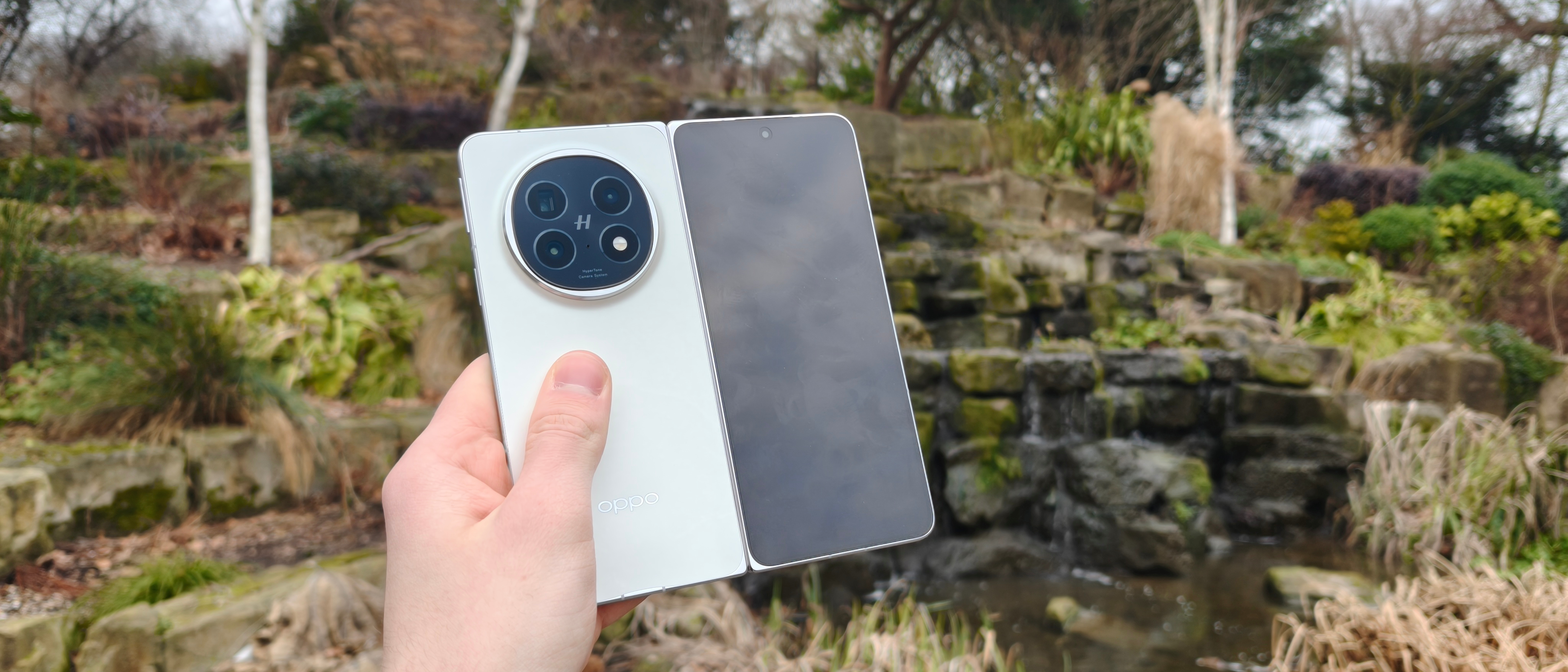TechRadar Verdict
The Oppo Find N5 is the folding phone of the future. The world’s new thinnest book-style foldable is here, and never has a folding phone felt so pocketable and easy to use. Both of its displays are the largest of their kind, while advancements in hardware power and battery tech bridge the gap between the folding phone and regular slab phones more successfully than any device before it. The cameras take a step back, and there are one or two bugs to iron out, but excellent internal specs make this one of the fastest folding phones you can buy – in short, it’s an engineering marvel.
Pros
- +
Incredibly thin
- +
Two fantastic displays
- +
Great battery life for a foldable
Cons
- -
Cameras are a step back
- -
Bloatware
Why you can trust TechRadar
Oppo Find N5 review: Two-minute review
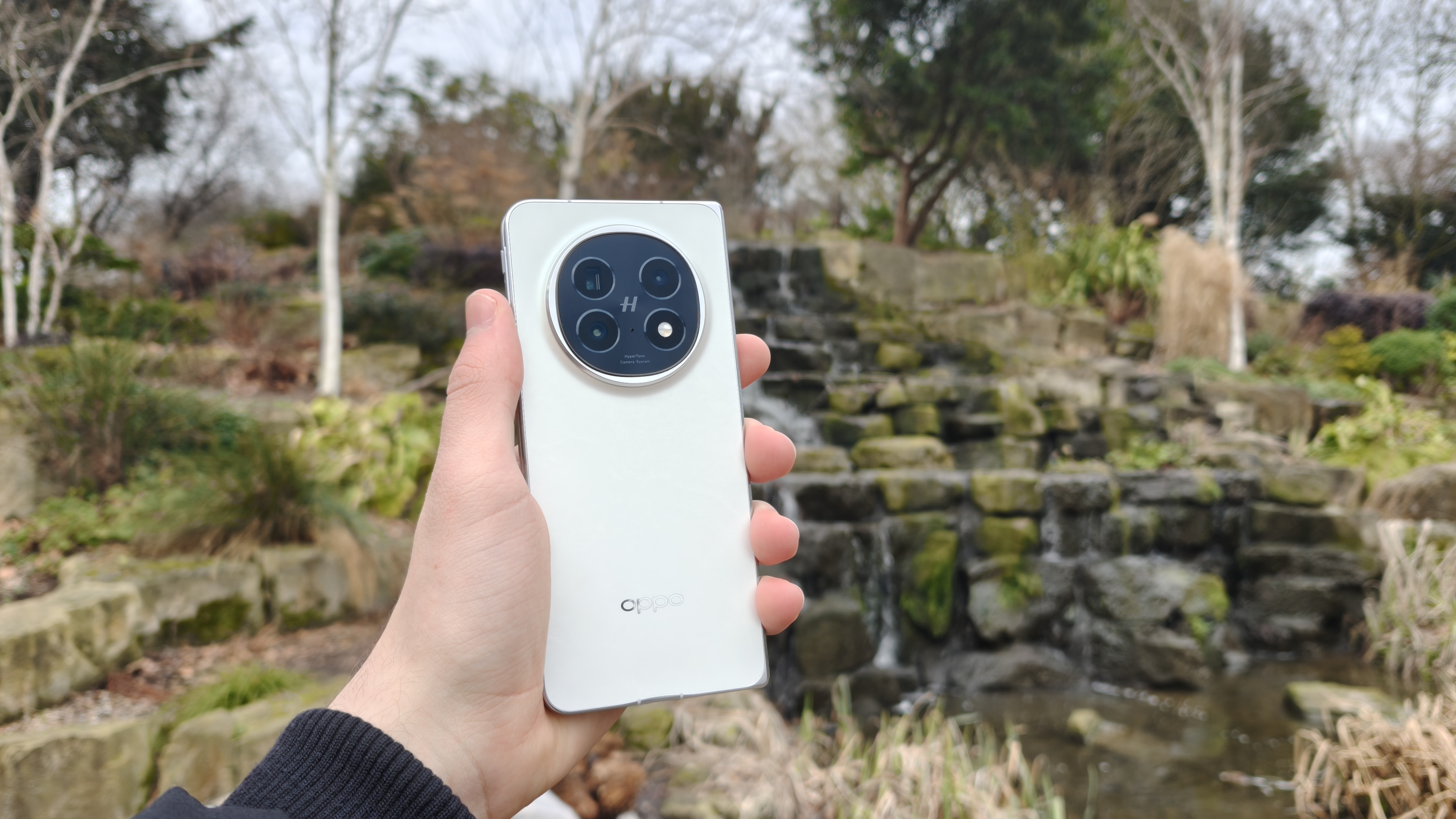
UPDATE 21 / 02 / 2025: Since the publishing of this review, Oppo has confirmed that the Find N5 will not be launching in the UK. We will update this review if and when availability information becomes known.
Additionally, the Find N5 supports 80W wired charging, not 90W as previously reported.
Oppo had one mission when making the Oppo Find N5: make the world's thinnest book-style foldable. It's a testament to the company's phone making skill that it not only succeeded, but produced such a powerful, enjoyable, and good-looking device along the way. For my money, this is the direction folding phones should be heading in, and using the Find N5 feels easier and more seamless than the folding devices I've used in the past. It's a strong contender for the best Oppo phone I've ever used.
The standout feature of the Find N5 is its design. The phone unfolded measures just 4.21mm thick, which is thinner than an iPad Pro and only beaten in the foldable space by the tri-fold Huawei Mate XT. It really is amazing to hold the Find N5 for the first time, and this slimness never stops being genuinely convenient. I'm here to tell you that this isn't a gimmick: the Find N5's profile is a big part of the reason the phone feels so useable. Even at a folded thickness of 8.93mm, it's barely bulkier than an iPhone 16 Pro Max. The displays are both great, and both the largest you'll find on a book-style phone, at 6.62-inches for the cover screen and 8.12-inches for the inner display.
The Find N5 has got the hardware power to challenge the premium slab flagships too. The Snapdragon 8 Elite chipset, 16GB of RAM, and 512GB of storage make the sole configuration a powerful one, and Oppo has made every effort to improve the historically middling battery life of the average folding phone with a huge 5,600mAh silicon-carbon cell. In the case of the Find N5, slim does not mean slow. Looking at the competition, the thicker and heavier Samsung Galaxy Z Fold 6, with its smaller battery and less powerful internals, seems a bit archaic by comparison.
It's not without compromise, though. In order to attain such a slim profile, the camera system has been scaled back compared to the previous generation Find N3 (still sold worldwide as the OnePlus Open) and results can vary from great to pretty undesirable. There are also a few software bugs, but I'm aware some of this will be due to developers not optimizing for the foldable form factor.
Overall, I'm very impressed with the Oppo Find N5. It's a huge step towards foldable devices that don't feel at all constrained by their form factor, with a barely-visible crease, two great displays, and a very reasonable battery life. Any imperfections aren't impactful enough to stop this feeling like the folding phone of the future. If it wasn't for its limited availability, the Find N5 would be a shoe-in for our list of the best folding phones.
Oppo Find N5 review: Price and availability
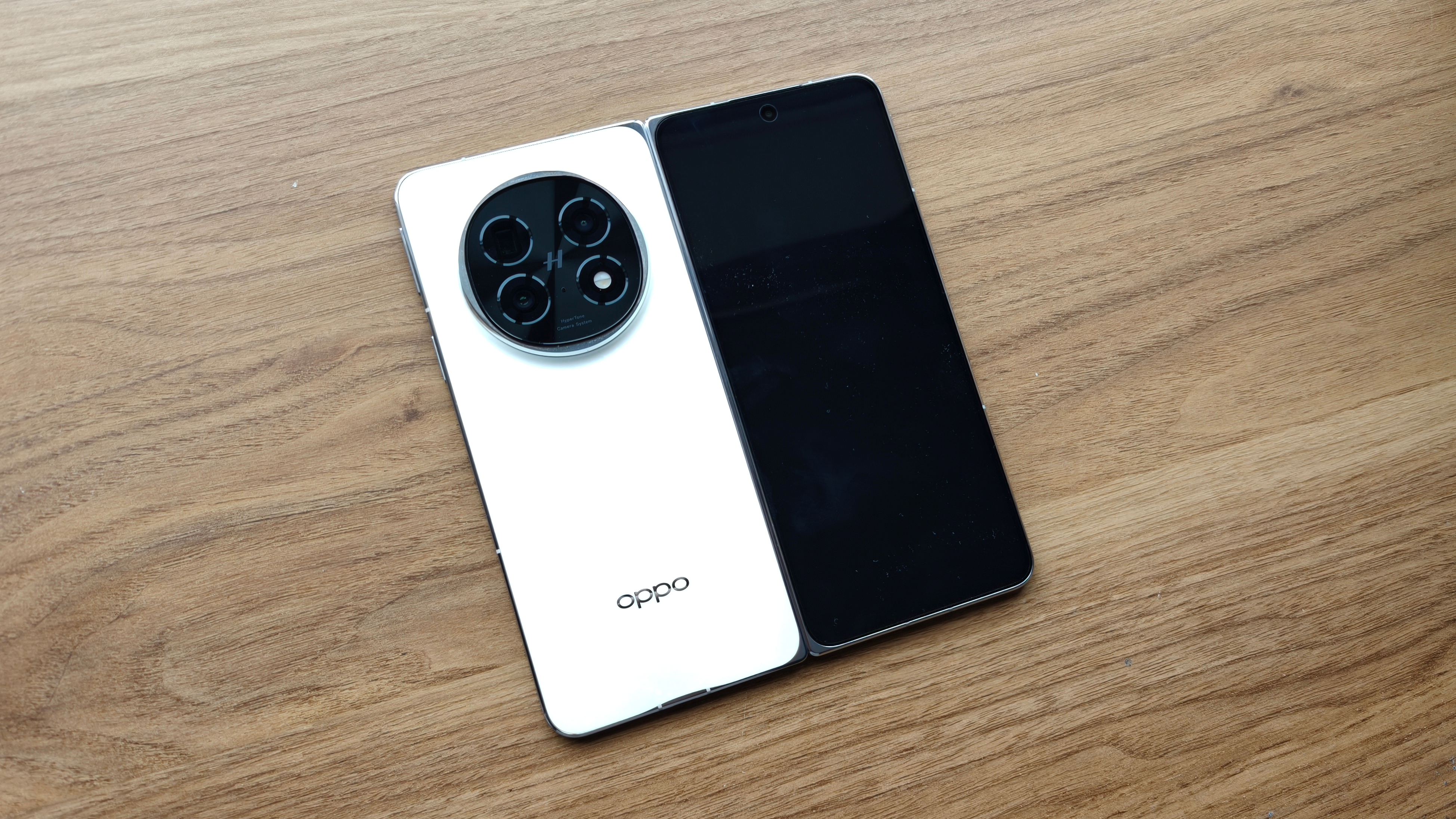
- International pricing TBC
- Availability TBC, not available in the UK
- Costs around £1500 in Singapore
Oppo hasn’t revealed pricing for the Find N5 yet, so we haven’t yet got a take on the value for money the phone offers. The phone has been confirmed to cost the equivalent of around £1500 in Singapore, but we're still waiting for further details.
As for availability, Oppo has no distribution in the US so it’s overwhelmingly likely the Find N5 won’t launch there. We aren’t quite sure of the full extent of the Find N5’s availability, either.
We’ll update this section once the phone’s pricing is officially available, but until then keep reading for a detailed review of the Oppo Find N5.
Keep in mind that if and when we hear of the Oppo Find N5's official availability and launch price in other regions, our overall verdict and score could change.
Oppo Find N5 review: Specs
Dimensions: | 160.87 x 145.58 x 4.21mm (unfolded) / 160.87 x 74.42 x 8.93mm (folded) |
Weight: | 229g |
Display: | 6.62-inch OLED (cover) / 8.12-inch OLED (inner) |
Resolution: | 1140 x 2616 (cover) / 2248 x 2480 (inner) |
Refresh rate: | 1-120Hz (both screens) |
Chipset: | Qualcomm Snapdragon 8 Elite |
Rear cameras: | 50MP main, 8MP ultra-wide, 50MP telephoto with 3x optical zoom |
Front camera: | 8MP, 8MP |
Storage: | 512GB |
RAM: | 16GB |
OS (at launch): | Android 15 with ColorOS 15 |
Battery: | 5600mAh |
Charging: | 80W wired charging 50W wireless charging |
Oppo Find N5 review: Design
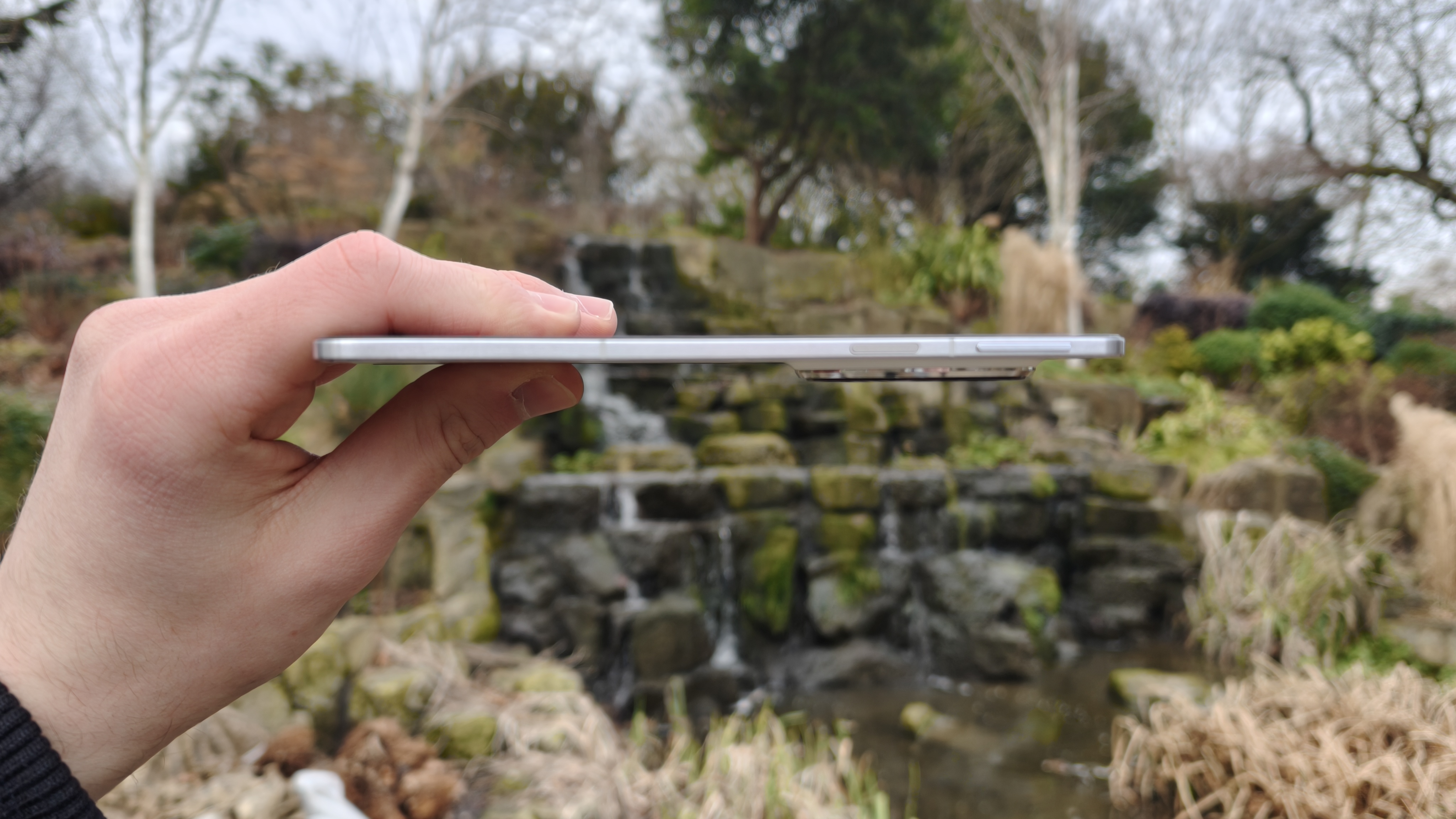
- 4.21mm unfolded thickness, 8.93mm folded
- Comes in two colors, black and white
- Crease is barely noticeable
The Oppo Find N5 is one of the most impressively designed phones I’ve ever used – actually, rewind that – the Oppo Find N5 is one of the most impressively designed things I’ve ever used. Unboxing the phone for the first time was one of those rare “wow” moments: the Find N5 is truly incredibly thin. At a folded thickness of 8.93mm it’s about half a millimeter thicker than an iPhone 16 Pro Max, and at an unfolded thickness of 4.21mm it’s even slimmer than a 2024 iPad Pro. Holding it side-by-side with the 5.8mm-thick OnePlus Open (the previous generation Find N3 in all but name) really highlights the progress Oppo has made in the past two years.
The Oppo Find N5 also nails the ever-crucial hinge: Oppo is calling its hinge the Titanium Flexion Hinge, and what this means is that Oppo has used 3D-printed titanium alloy to create a hinge that’s more resilient and rigid while being 26% smaller than the previous generation. I noticed that the hinge has real resistance to it, feeling solid when open between around 20 and 120 degrees, and snapping open or shut on either side of this range. Oppo says the hinge should last for 10 years of normal use, though this will naturally vary between users.
The Find N5 opens nearly completely flat, and that smaller hinge makes less of an impression on the inner display, too – the crease is really only visible when the screen catches the light in a certain way, and it’s effectively invisible when you’re actually using the phone. Oppo says the crease on the Find N5’s inner display is 10% narrower and 50% shallower than the already impressively unobtrusive crease on the OnePlus Open. The crevice running down the middle of the Samsung Galaxy Z Fold 6 looks absolutely comical by comparison.
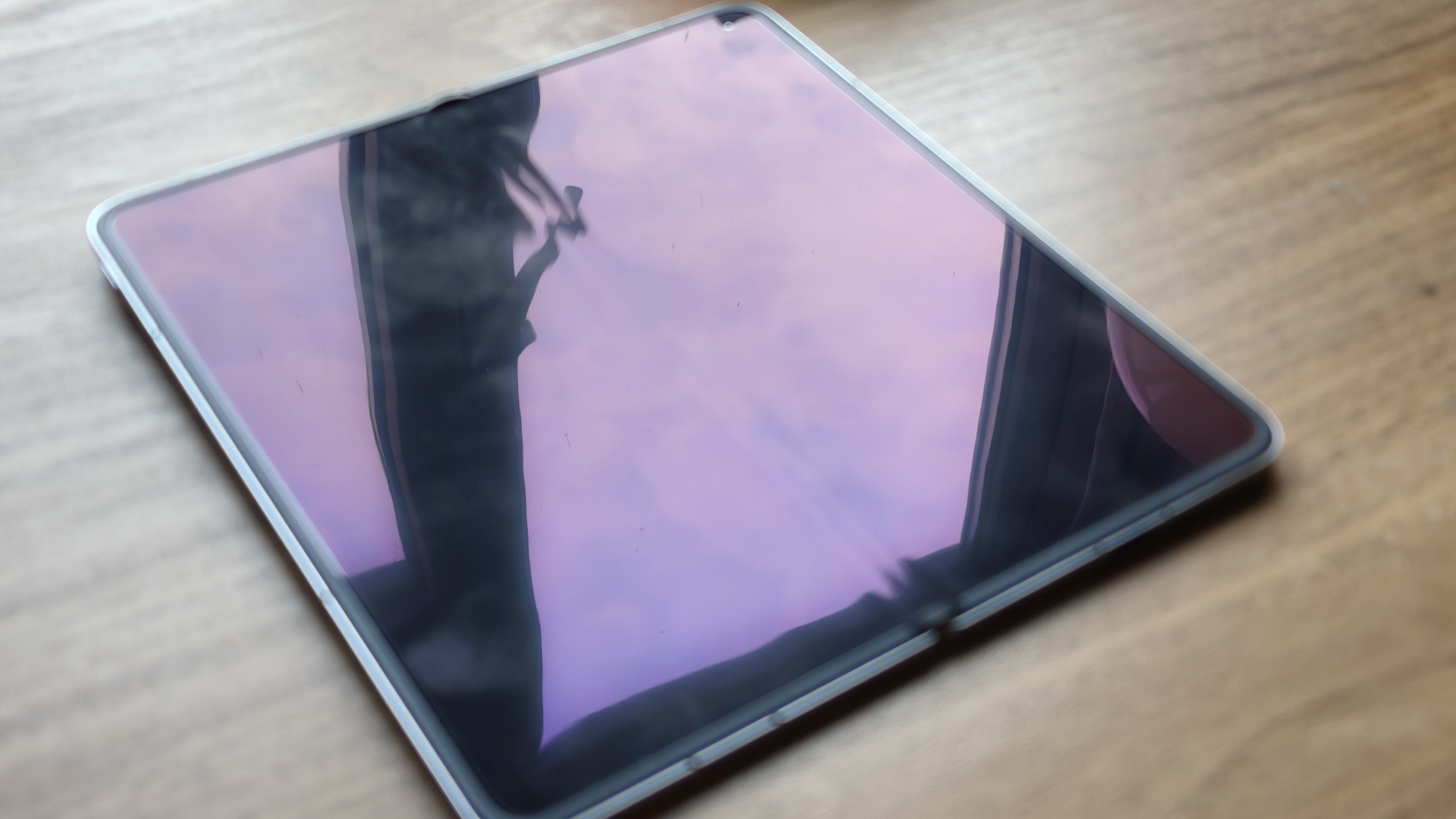
The rest of the chassis is made of aluminum, with a glass cover screen and fiber rear panel. The bezel around the inner display is made of a thick plastic that conceals strong magnets to hold the phone shut, and the inner display itself is covered in a plastic coating. I had no durability concerns with the sturdy outer frame of the phone the inner display can be dented by anything hard, even a fingernail, so be cautious. Buttons are standard fare, with a volume rocker, ringer switch, and power button doubling as a fast fingerprint scanner.
The Find N5 pushes the boat out in terms of water resistance, and as far as I’m aware is the first folding phone to carry both an IPX8 and IPX9 rating for protection against water ingress. There’s no certified dust resistance though.
Oppo has a great track record when it comes to aesthetics, and the Find N5 is no different. In global markets the phone is available in either Misty White or Cosmic Black, and the white unit I tested featured a cool marble effect similar to the pearlescent material used for the Oppo Find X8 Pro. It’s a subtle touch that adds a hint of luxury, and contrasts nicely with the slimmed-down black camera island. Ergonomically, the phone’s rounded edges make it reasonably comfortable to hold when unfolded and decently usable one-handed, at least for right-handed users.
If I had one note about the design of the Oppo Find N5, it’s that the edges are so slim that it can actually be a little tricky to get enough purchase to open the phone. Then again, there’s not much Oppo can do about that while continuing to make these phones thinner, which if you ask me is a much more important goal. Overall, the Find N5 is a marvel of engineering that feels good to use – you can’t ask for much better than that.
Design score: 5 / 5
Oppo Find N5 review: Display
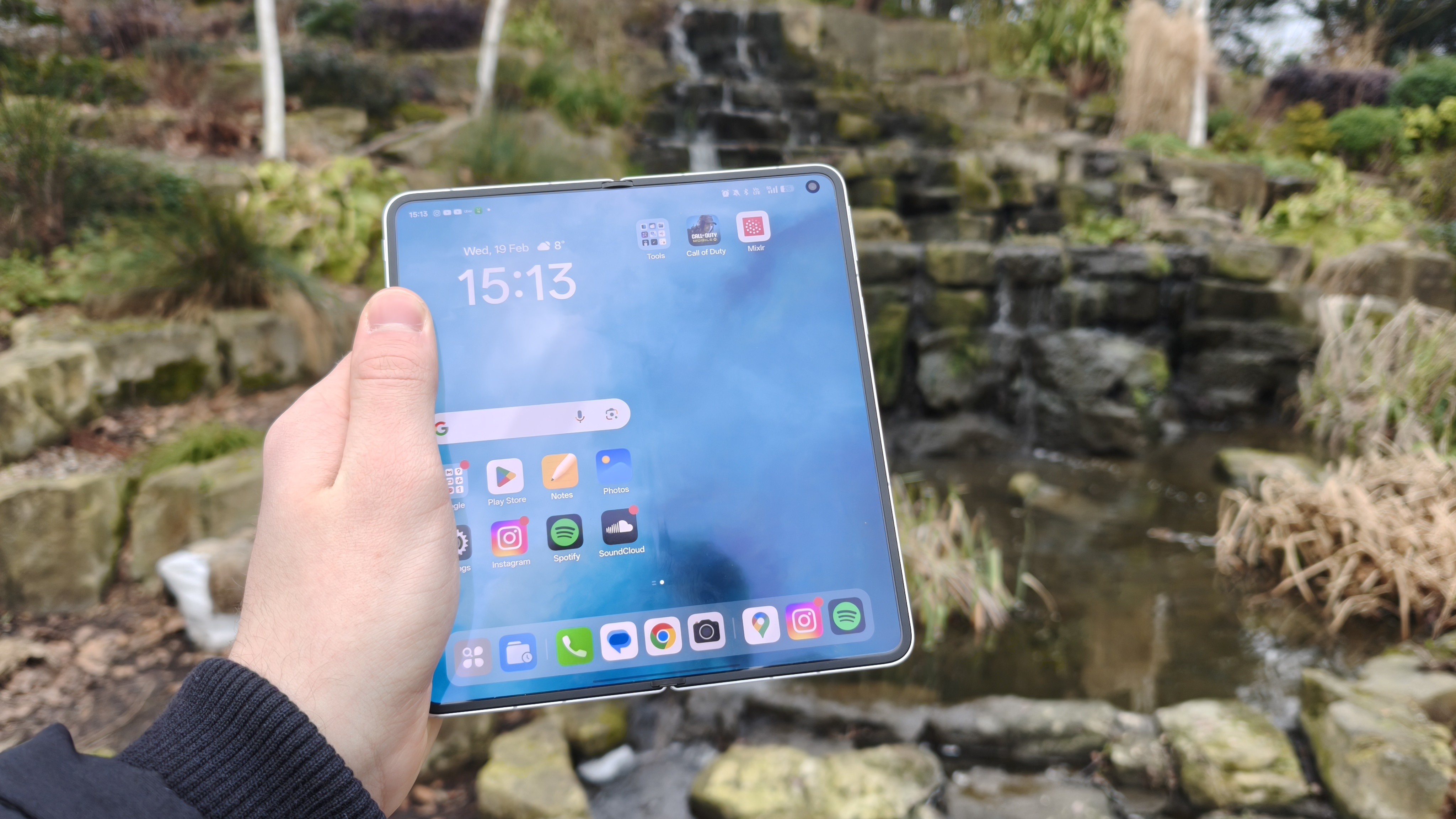
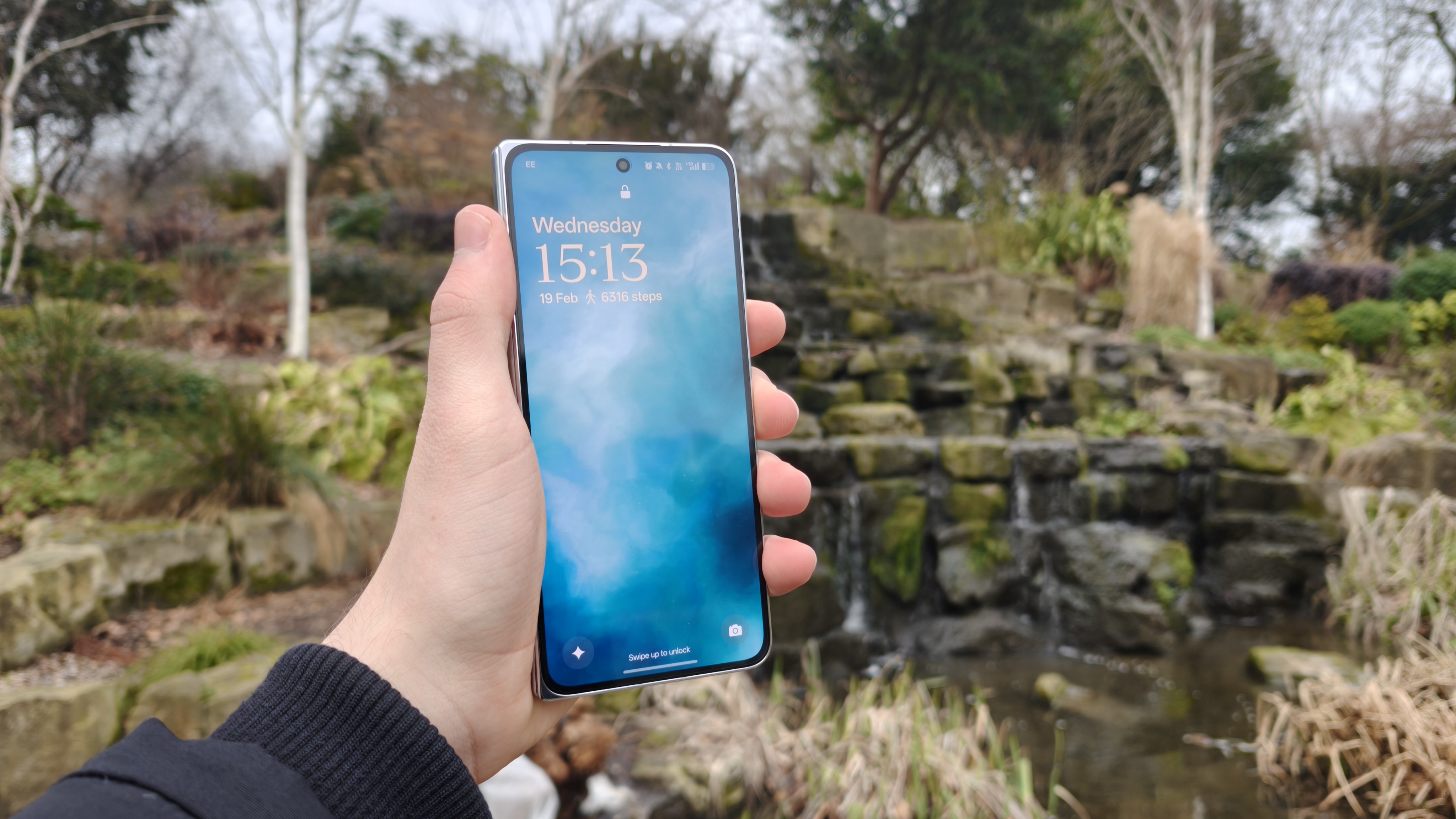
- 6.62-inch cover screen
- 8.1-inch inner display
- Both screens are bright and sharp with 120Hz refresh rate
Though Oppo has leaned on the Find N5 being the “world’s thinnest book-style folding phone” in marketing, the displays here are class-leading in a different way. The Oppo Find N5 sports the largest displays on any phone of its type, with a 6.62-inch cover screen and massive 8.12-inch inner display, and both are sharp, bright, responsive panels that make just about anything look excellent.
The Oppo Find N5 features an 8.12-inch folding inner display, with a resolution of 2248 x 2480 pixels, peak brightness of 2100 nits, and variable refresh rate of 1-120Hz. At an almost-square aspect ratio of 9.9:9, the Find N5 is a great choice for watching videos, taking photos, and reading articles. This screen is a touch dimmer than the inner display on the OnePlus Open, which is noticeable but not an issue: I found the Find N5 to be more than serviceable in a variety of indoor and outdoor lighting conditions.
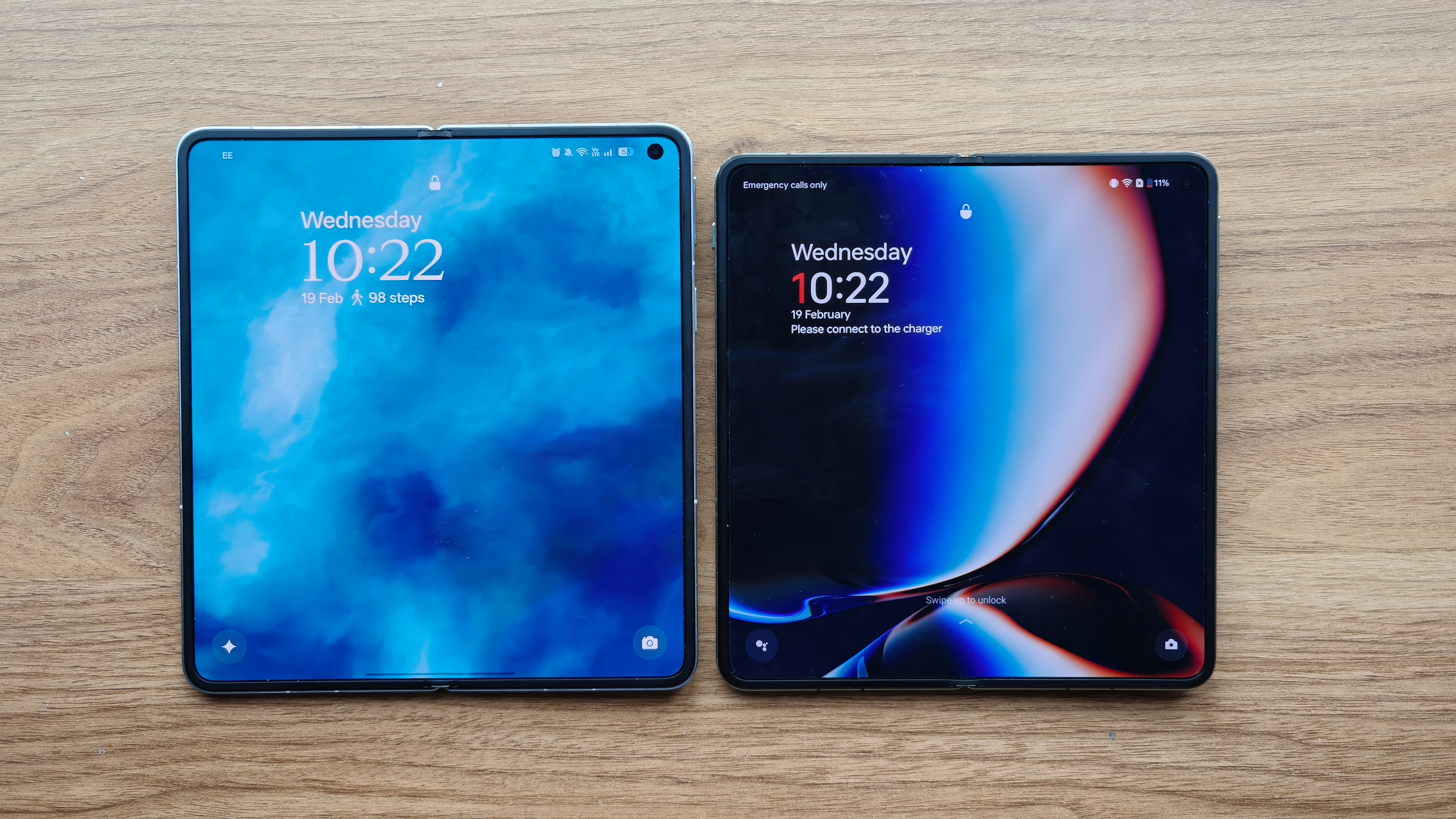
By surface area, the Find N5’ inner display is larger than an iPad mini’s, which makes it a great choice for multitasking. As for the cover screen, the Find N5 goes well beyond the idea of a backup panel, with a sharp and contrasty 6.62-inch panel that makes one-handed use not only viable, but genuinely enjoyable. Both displays support the Oppo Pen stylus, sold separately, which opens even more productivity possibilities.
The cover display boasts a resolution of 1140 x 2616 pixels, peak brightness of 2450 nits, and that same variable 1-120Hz refresh rate. At an aspect ratio of 20.7:9 it’s a touch slimmer than the conventional 19.5:9 employed by the iPhone 16 and Samsung Galaxy S25, but wider than the 22.1:9 cover screen on the Samsung Galaxy Z Fold 6.
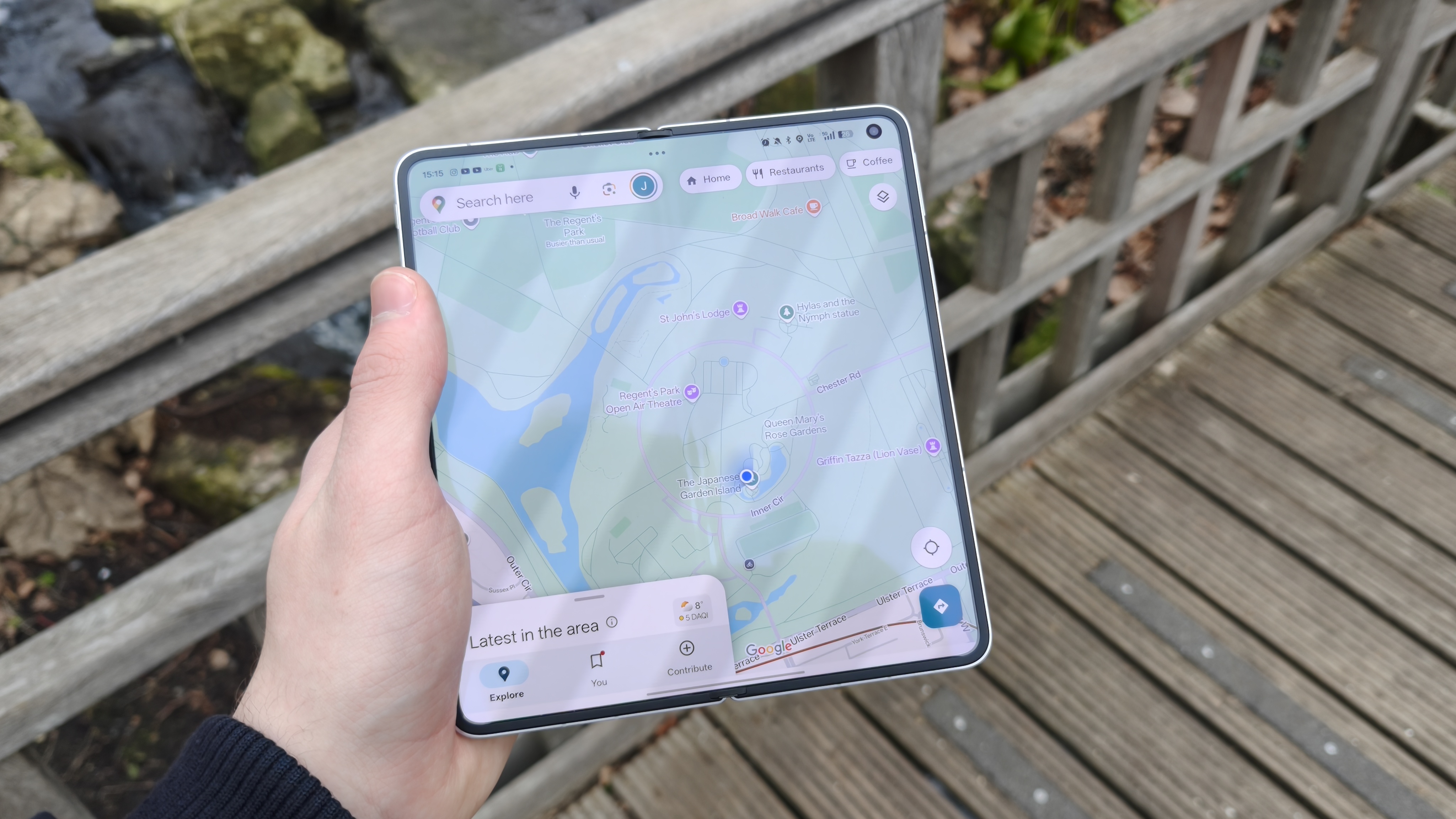
Switching between the two displays remains as easy as opening and closing the phone. Opening the phone will instantly continue your activity on the inner screen, while jumping from the inner to outer screen requires a swipe up to keep things going. These are two great panels that really feel like they work together as part of one cohesive system.
Display score: 4.5 / 5
Oppo Find N5 review: Software
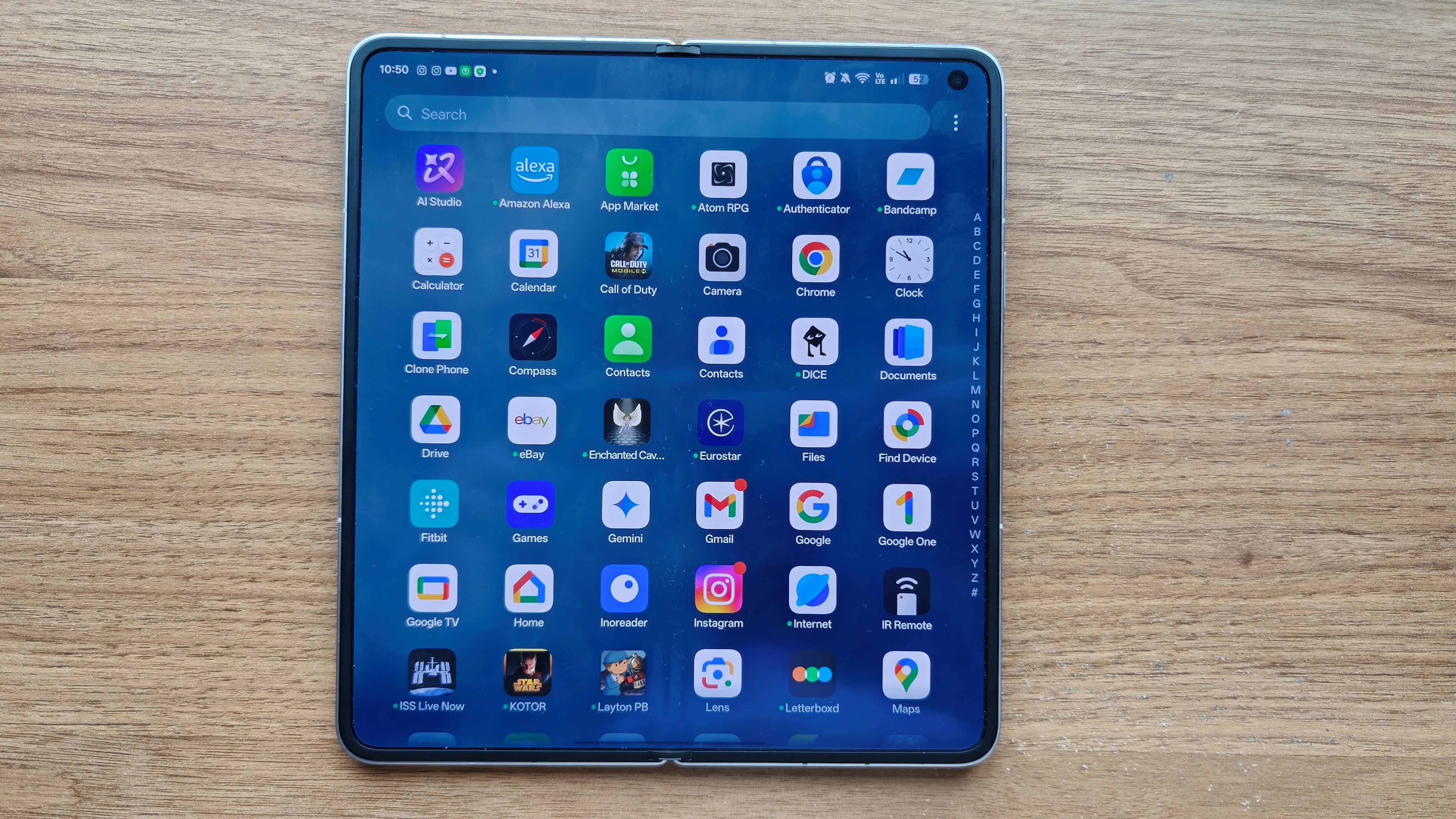
- Android 15 with ColorOS 15
- Great multitasking features
- Bloatware on a phone of this caliber is ridiculous
I’ve been a fan of the software experience on Oppo phones for quite some time now – ColorOS 15 (based on Android 15) is one of the cleanest, fastest, and most customizable implementations of Android on the market, and Oppo has gone out of its way to ensure the experience translates well to the folding form factor; the UI as a whole remains blisteringly fast. Default apps and AI are all fine, but I imagine most users will head for the pre-installed Google suite and Gemini for their general application and AI needs.
In many ways, ColorOS still feels like an imitation of iOS, and the projection of the OS onto the folding form factor can feel like a bizarro mashup of iPhone and iPad features. The three dot multitasking menu is here, directly lifted from iPadOS, and allows you to activate split screen or floating windows with as many as four apps at once (three in split view and one floating). Originality aside, this works very well, and I was surprised by just how much the Find N5 could handle. I also like the pop-up that appears when you switch between two apps frequently, which suggests putting the two in split screen.
There’s another unique productivity feature that Oppo has added to the Find N5, but it isn’t installed by default. The new O+ Connect app for Mac allows the Oppo Find N5 to control Apple computers remotely, with real-time screen mirroring and a virtual keyboard appearing on the phone screen. This, building on previous file sharing functionality between Oppo phones and iPhones and iPads via the same app. O+ Connect works wirelessly over LAN, though Oppo wouldn’t tell me the exact latency. I’m not sure how useful this is in practice, but the idea of seeing Adobe Premiere Pro or Ableton Live on such a small screen is genuinely novel.
As is standard with Oppo phones, the customization on offer is world-class, with gorgeous live wallpapers and various ways to change fonts and colors across the UI. Regrettably, though, the phone comes preloaded with a handful of bloatware apps that most people won’t use – frankly, it’s frustrating that a phone of this price and calibre comes with any bloatware whatsoever. This is a luxury phone: it’s more about respect for the customer than any sort of actual inconvenience. That said, once you get the app drawer looking how you want it, ColorOS sails smooth.
Software score: 3.5 / 5
Oppo Find N5 review: Cameras
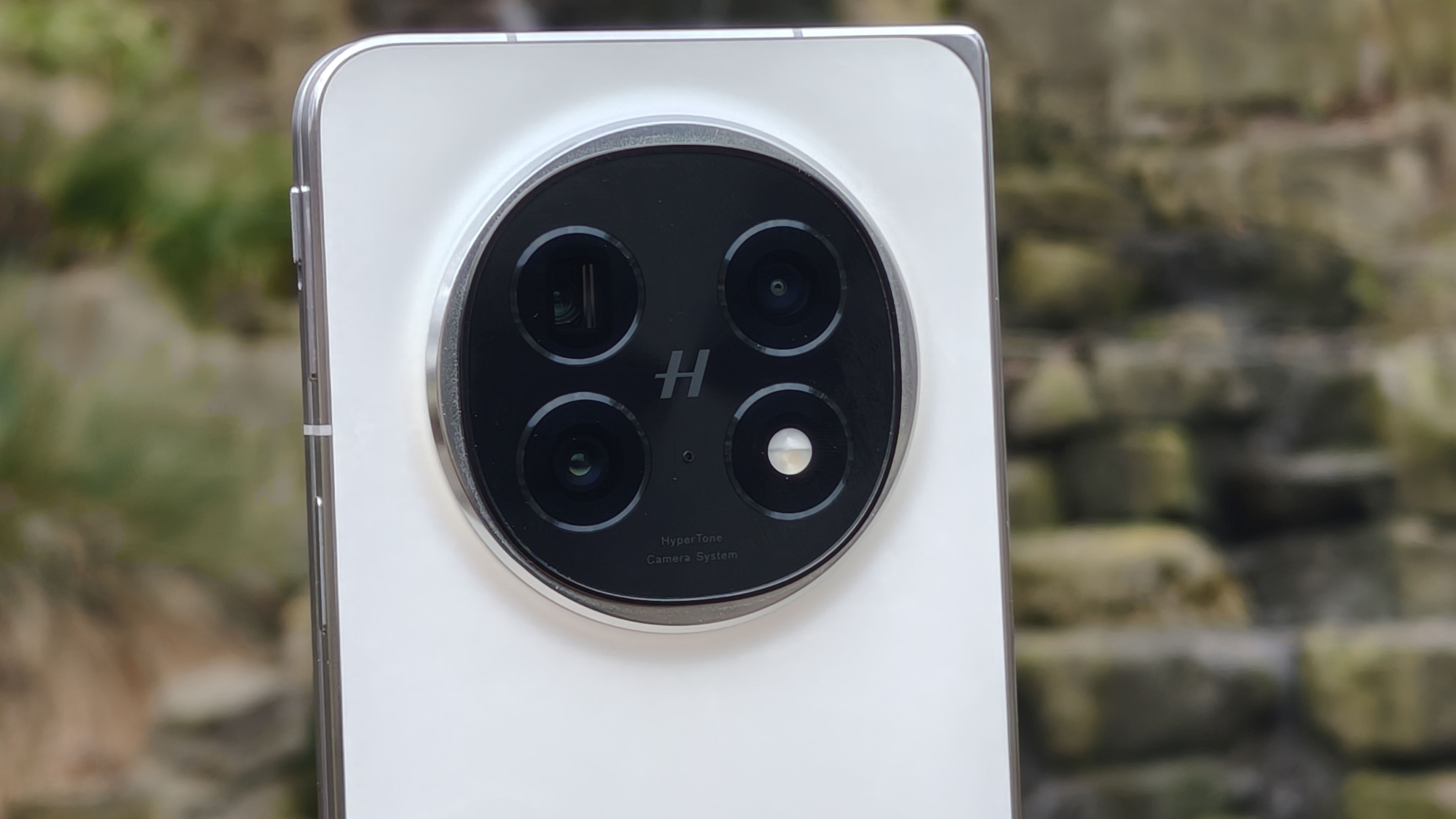
- 50MP main camera
- 8MP ultra-wide camera
- 50MP telephoto camera with 3x zoom
The OnePlus Open – a.k.a the global version of the Oppo Find N3 – made waves by being the first folding phone to sport a properly flagship-grade camera system – it also had one of the largest camera bumps we’ve ever seen. With the Find N5, Oppo has prioritized a slim build to the point that the camera system has had to be scaled back. The cameras here are still usable, good even, but definitely where the compromises needed to produce the world’s thinnest book-style foldable are most acutely felt.
The Find N5 comes equipped with a 50MP main camera, 8MP ultra-wide camera, and 50MP telephoto camera with 3x optical zoom. Across the board, we see a reduction in resolution compared to the previous generation, though the main and telephoto cameras have larger sensors (Oppo hasn’t shared the sensor size for the ultra-wide). This translates to brighter images at the cost of a bit of granular detail. The main camera is decent and reliable, producing expressive photos in daylight and holding its own in darker environments too. The reach and depth of field offered by the 3x telephoto camera is especially impressive, while the 8MP ultra-wide is a mystifyingly low-spec choice that is hard to get good images from.
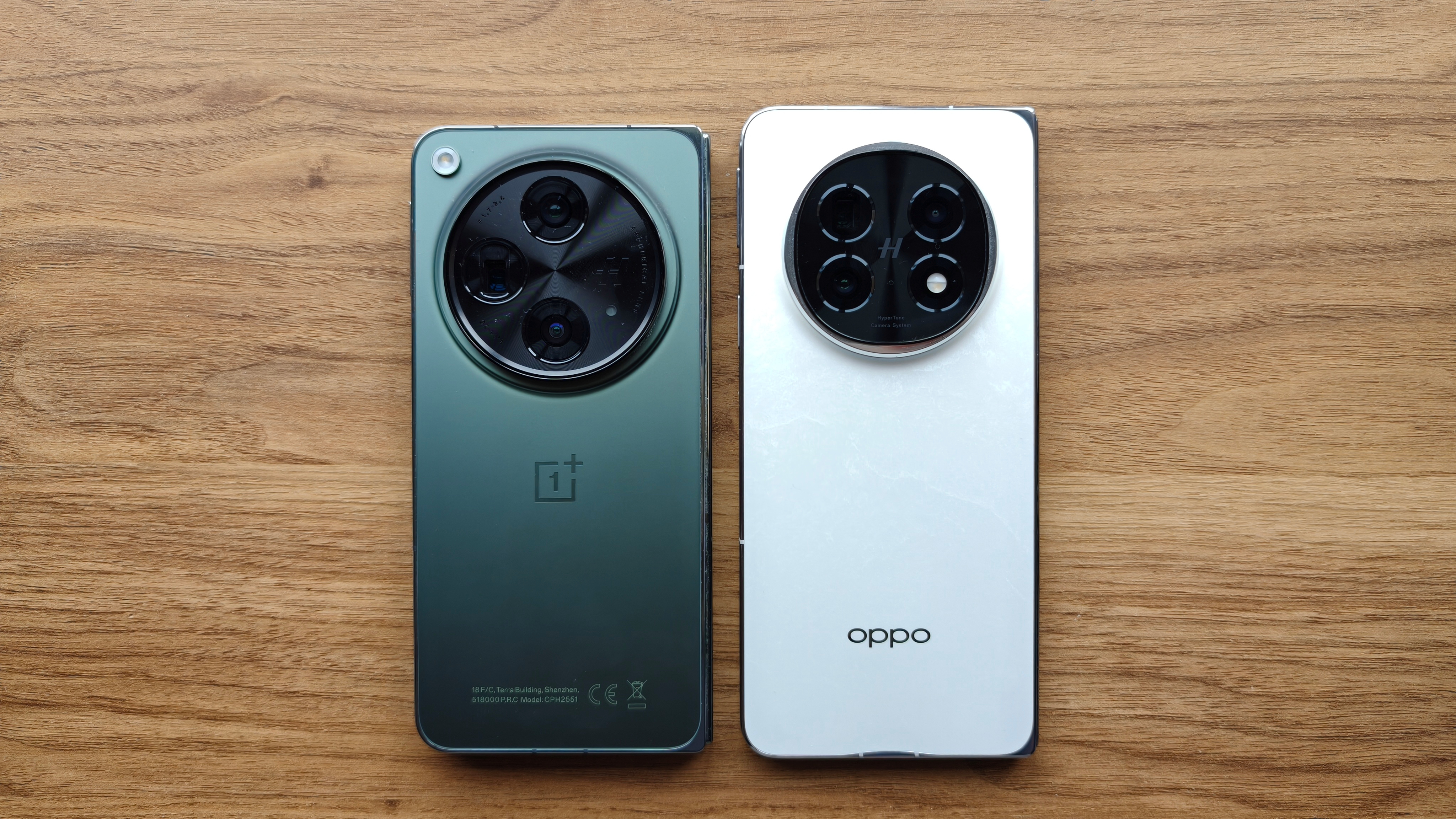
The Find N5 also sports two identical selfie cameras – one punch-holed into each display – and they’re simply below par. Both are stuck at a measly 8MP and produce low-detail, low-contrast images. As the Find N5 is a folding phone, you can of course take selfies with the main camera, using the cover screen as a viewfinder, but that’s not really a replacement for a decent selfie camera – especially if you’re trying to be subtle.
As for the actual photography experience, the folding form factor allows for a lot of freedom with how you take your pics and videos. The inner screen works incredibly well as a massive viewfinder, and you can use the lower half of the screen as a gallery while shooting. Equally, the phone is slim enough that taking photos with the screen folded is just as pleasant. As for video, the phone maxes out at 4K 60fps.
The high-end cameras common to today’s flagship phones require a certain amount of physical space, which Oppo may have been unable to accommodate in such a slim frame. Alternatively, designing such a slim phone might have just been too expensive a process to make a better camera system cost effective. Either way, I respect that making the world's thinnest folding phone comes with some compromises, and the Find N5 can still take great photos – but this camera system is a noticeable backwards step.
Camera score: 3 / 5
Oppo Find N5 Camera Samples
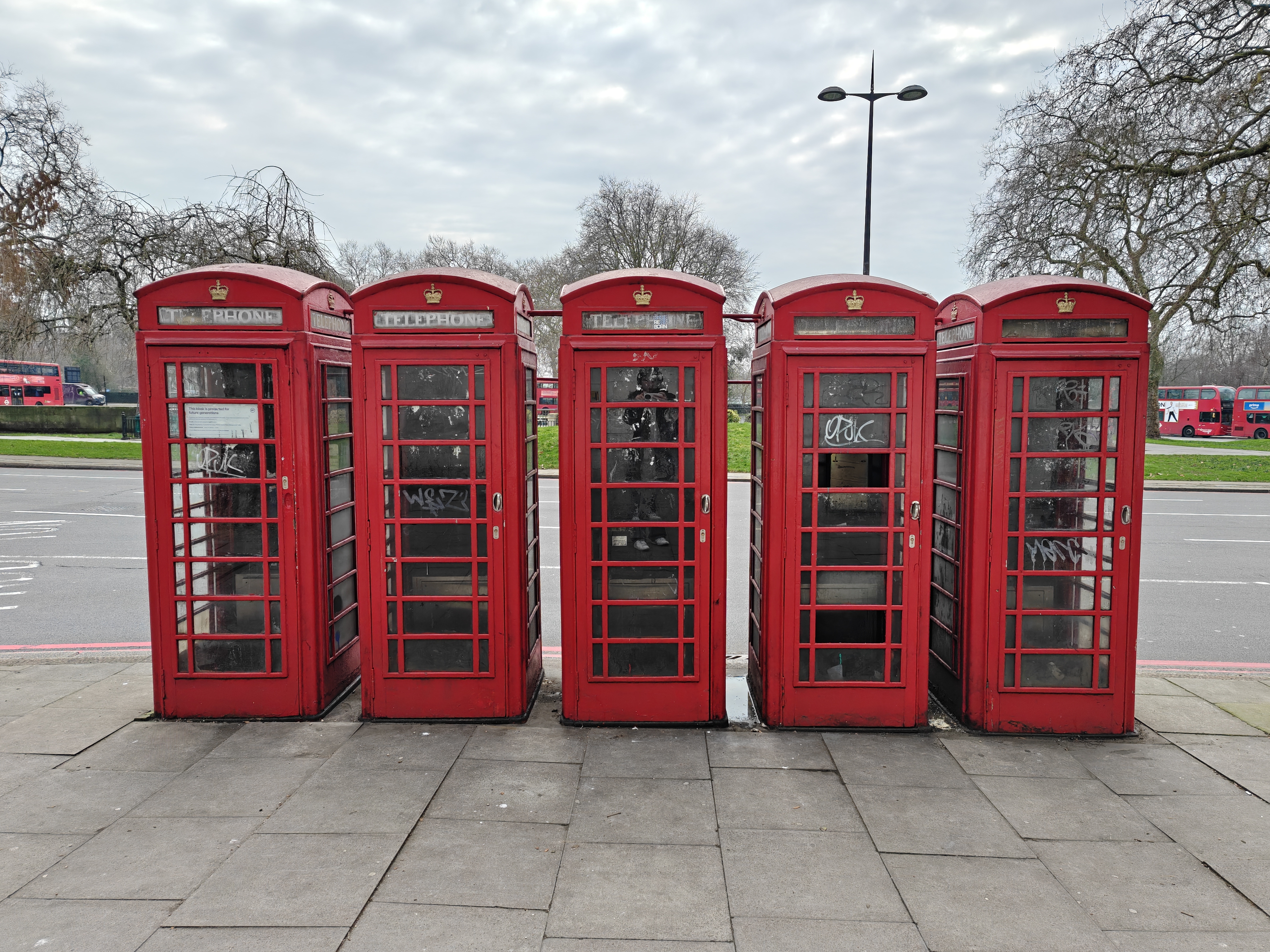




Oppo Find N5 review: Performance
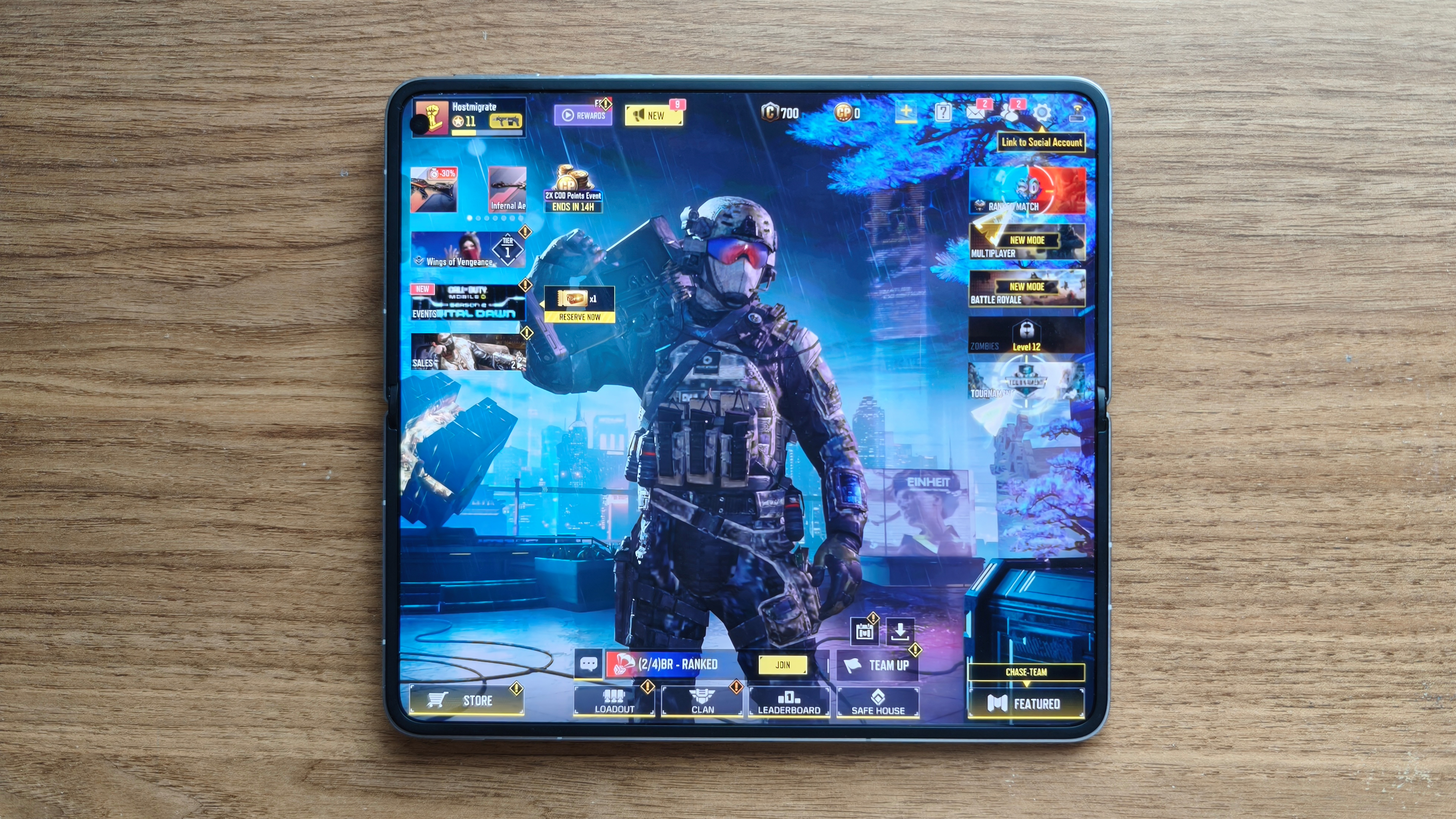
- Snapdragon 8 Elite (7-core variant)
- 16GB of RAM
- 512GB of storage
Oppo wasn’t messing around when it decided on the internal specs of the Find N5. This is a seriously powerful phone equipped with the latest mobile hardware and a massive amount of memory. There’s only one configuration to choose from, but with specs like these, you’re very unlikely to be disappointed.
Equipped with the Qualcomm Snapdragon 8 Elite chipset, 16GB of RAM, and 512GB of storage, the Find N5 has more than enough hardware power to handle pretty much anything you can throw at it. The phone flew through day-to-day tasks and sessions of Call of Duty Mobile with no fuss, only warming slightly during the most intense multitasking.
The Snapdragon 8 Elite chipset found within the Find N5 is the lower-powered 7-core variant, but you wouldn’t notice it in normal use. The large screen, responsive UI, and powerful internals come together to provide a consistently excellent experience.
However, I did encounter some glitchy behavior during my testing period. On one occasion, the phone fully locked up when switching between the cover and inner screen, which required a restart. Other times, apps would become unresponsive due to a change in aspect ratio or switching screens. Some of this will be for app developers to sort out, and Android 16 should bring features that force developers to make apps that deal better with changing aspect ratios, but it’s still something to be aware of.
Overall, despite a few hiccups, you should find that the Find N5 flies through whatever you throw at it, with enough storage to last years of normal use and enough memory to keep up as applications and AI get more complex. It's the first folding phone I've seen that I'd consider a genuine productivity tool.
Performance score: 4 / 5
Oppo Find N5 review: Battery
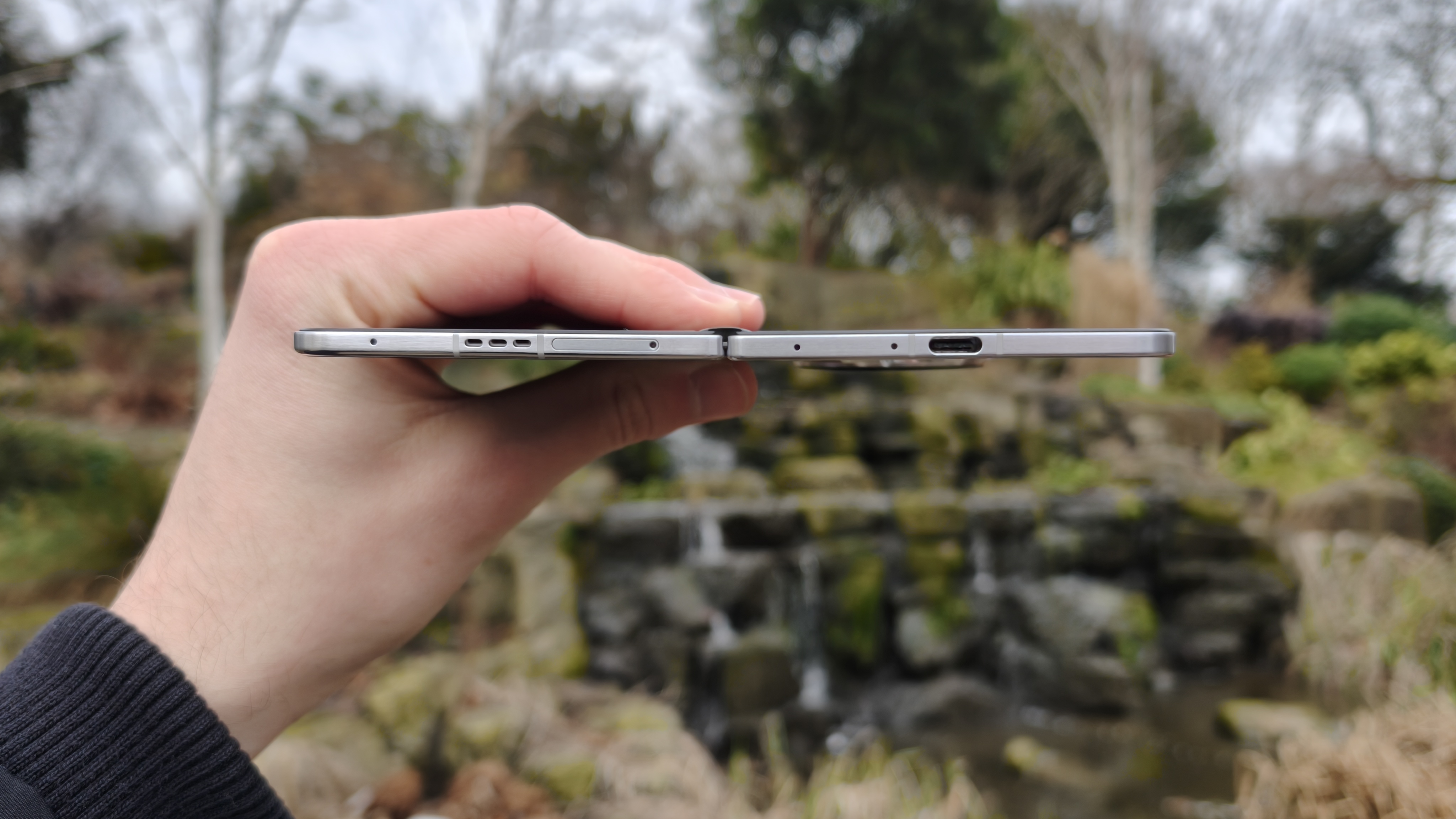
- 5,600mAh silicon-carbon battery
- 80W wired charging
- 50W wireless charging
It’s generally accepted that folding phones will have a shorter battery life than their candy-bar counterparts, due to the use of inefficient split battery cells, and the increased power draw of a large inner screen. With the Find N5, Oppo has made every effort to counteract this trend, but there’s only so much that can be done within the bounds of folding phone design.
With a – say it with me – class-leading battery capacity of 5,600mAh, the Find N5 can make it through a day of mixed use without having to think too much about charging. That battery is larger than the cells found in either the Samsung Galaxy Z Fold 6 or Google Pixel 9 Pro Fold, and I found myself not really worrying about charging overnight or to 100% before leaving the house. That’s partly thanks to the adoption of silicon-carbon battery technology, which allows for a much higher power density. If you do get down to 1%, the phone enters an ultra-low power mode that keeps essential functions active until you can top up.
Charging is really no chore, as the Find N5 supports some truly rapid charging speeds. The phone supports up to 80W wired charging and 50W wireless charging over Oppo’s proprietary AirVOOC standard. That’s excellent, not just for a folding phone but for a smart device in general – there are laptops that don’t support charging this fast. Oppo quotes a 50-minute charge time from 0-100%, but I found this took around 45 minutes with an Oppo 80W charger.
I did notice the battery draining a touch faster than on modern slab flagships, but then again I also noticed an improvement versus the OnePlus Open. Relative to other folding phones, this is a winner, but compared to slab phones there’s still a little catching up to do.
Battery score: 4 / 5
Should you buy the Oppo Find N5
Attributes | Notes | Rating |
|---|---|---|
Value | We don't have pricing for the Oppo Find N5 yet, so we can't judge it's value. | N/A |
Design | Industry-leading thinness and Oppo's flair for aesthetics are a perfect marriage. This is a phone that looks as good as it feels to use. | 5 / 5 |
Display | The Find N5 sports two fantastic screens, both of which are the largest you'll find on a phone of this type. | 4 / 5 |
Software | ColorOS is as pleasant as ever, but the odd bug and bloatware bog things down. | 3 / 5 |
Camera | The cameras on the Find N5 are fine, and can take great photos, but this is clearly where Oppo has compromised to achieve its design goals. | 3 / 5 |
Performance | Powerful hardware and solid first-party optimization make the Find N5 a powerhouse, but there are a few bugs to iron out. | 4 / 5 |
Battery | Oppo has made every effort to buck the trend of poor battery life in folding phones: a large cell and speedy charging keep things going. | 4 / 5 |
Buy it if...
You want the thinnest folding phone
The Oppo Find N5 is only beaten by the tri-fold Huawei Mate XT when it comes to thinness, and while we wait for the latter device to come to global markets the Find N5 reigns as the thinnest foldable money can buy. This is a futuristic piece of tech that feels very much ahead of the curve design wise.
You want a powerful mobile device
With the Snapdragon 8 Elite chipset and 16GB of RAM, the Oppo Find N5 takes on everything you throw at it with ease. The inner screen is great for multitasking, and games run very well so long as they support the squarer aspect ratio. You won't be left wanting for hardware power.
You want two great displays
The Oppo Find N5 stuns with both its cover screen and large folding display. Not only are these the biggest screens found on any book-style folding phone, they're bright, sharp, and rich with color and contrast, making the phone a winning choice for viewing videos, movies, and photos.
Don't buy it if...
You want the best cameras
The cameras on folding phones are rarely up to the standard of their slab phone counterparts, but the Find N5 takes another step back in the photography department to attain its slim profile. These cameras are fine, but nothing to write home about.
You want something familiar
I'm a big fan of Oppo's ColorOS Android wrapper, but for users who are more accustomed to Samsung or Google phones there may be a bit of a learning curve. Ironically, the amount of, ahem, inspiration Oppo takes from iOS may make jumping ship from iPhone a touch easier.
Oppo Find N5 review: Also consider
OnePlus Open
The OnePlus Open is still on sale from OnePlus directly, as well as select third-party retailers and networks. As mentioned, this is the Find N3 in all but name. Since OnePlus isn't releasing its own foldable this year, this is the closest you'll get to the Find N5 in the US.
Read our OnePlus Open review
Samsung Galaxy Z Fold 6
Though the Find N5 bests the Galaxy Z Fold 6 in many ways, there's a reason so many people choose Samsung's iconic foldable over the competition. Great cameras, familiar software, and integration with the Samsung ecosystem make this phone a compelling choice.
Read our Samsung Galaxy Z Fold 6 review
Oppo Find X8 Pro
Want a beautiful, powerful Oppo phone with none of this folding malarkey? Get the Oppo Find X8 Pro and enjoy one of the best camera phones ever produced.
Read our Oppo Find X8 Pro review
How I tested the Oppo Find N5
I used the Oppo Find N5 as my main smartphone for a period of one week, putting it through daily use cases like watching videos, listening to music, scrolling through social media, and reading articles, as well as more intentional tests like gaming sessions and timed charging. The model I tested came in the white color option and came with the standard 16GB of RAM and 512GB of storage.
Using the Find N5 as my daily driver over a week or so also gave me a sense of how useful or annoying the positive and negative attributes of the Find N5 are, particularly how the phone holds up ergonomically over time. I then applied my broad knowledge of the smartphone market and journalistic training to assess the performance and value of the Find N5.
For more on our smartphone testing process, be sure to take a look at how we test phones for review.

Jamie is a Mobile Computing Staff Writer for TechRadar, responsible for covering phones and tablets. He’s been tech-obsessed from a young age and has written for various news and culture publications. Jamie graduated from Goldsmiths, University of London in 2024 with a bachelor’s degree in Journalism. Since starting out as a music blogger in 2020, he’s worked on local news stories, finance trade magazines, and multimedia political features. He brings a love for digital journalism and consumer technology to TechRadar. Outside of the TechRadar office, Jamie can be found binge-watching tech reviews, DJing in local venues around London, or challenging friends to a game of Super Smash Bros. Ultimate.
You must confirm your public display name before commenting
Please logout and then login again, you will then be prompted to enter your display name.
